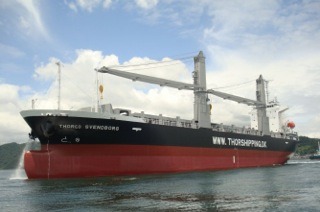New York State’s new energy plan calls for 50 percent of energy used in the Empire State to be generated by renewable sources – like solar, hydropower, biomass and wind – by 2050.
That has advocates for offshore wind pressing for New Yorkers to embrace offshore wind near Long Island. The environmental group Oceana says the region is particularly well situated with prevailing winds to generate up to 11.6 gigawatts of offshore wind potential – roughly the output of 18 medium-sized boiling water nuclear reactors, enough juice to light around 9 million homes.
One big reason for caution: Protests from the Long Island fishing industry.
“It’s an industrial application on the ocean floor. It’s that simple,” said Bonnie Brady, executive director of the Long Island Commercial Fishing Association. Her group is already opposing plans by Rhode Island-based Deepwater Wind for 35 turbines in waters between Block Island and Martha’s Vineyard.
“It’s everything. There’s squid, there’s scup, there’s fluke. It’s the whole shopping cart,” Brady said of the fishermen’s grounds. They worry construction of monolithic turbine towers will alter both the sea floor environment and current patterns, she said.
Hearing those arguments, “the New York Department of State has really been on the ball. They understand the importance of commercial fishing and the recreational and charter industry,” Brady said.
Still, the first small wind projects in the Northeast are moving forward. On Monday the 408’x69”x30” cargo ship Thorco Svendborg arrived at the South Terminal dock at New Bedford, Mass., carrying wind turbine parts manufactured in Spain, assisted by the tugs David McAllister, Shannon McAllister and Rainbow. The turbine parts are going to a shoreside location, on a Plymouth, Mass. cranberry farm, not the embattled Cape Wind proposed off Cape Cod that the $113 million port refurbishment was supposed to support.
But it was the first use of the terminal for its purpose as a wind energy hub. This month Blount Boats in Warrenton, R.I. will start work on the first American-built wind farm crew boat, for Deepwater Wind’s progress toward a five-turbine demonstration project at Block Island in Rhode Island state waters. With Deepwater’s associated support work underway at Quonset Point up Narragansett Bay, it shows there’s still enough political backing – and U.S. Department of Energy support – to inch these projects forward in the face of local opposition and the new fact of cheap domestic natural gas energy.





